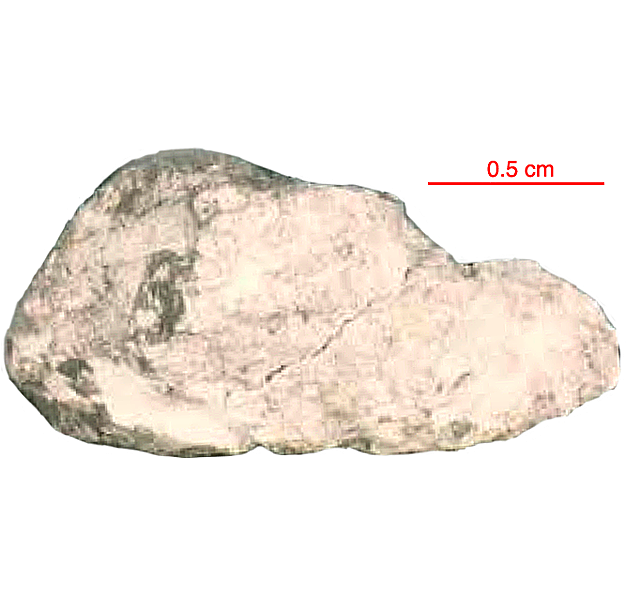
Fact sheet
15362 is from a rake sample and is a cataclastic ferroan anorthosite that proved difficult to date. It consists of 98% plagioclase (An96.5), 2% orthopyroxene (Wo2En59) and trace augite, ilmenite, chromite and troilite. The plagioclase has been badly crushed and annealed. The wide spread in composition of pyroxene indicates that the parent rock was held at subsolidus temperature for a long time.
The sample weighed 4.2 grams before analysis. A lower limit for the age of 15362 is given as 3.98 b.y. (Ar/Ar), but the sample did not yield a good plateau. The simplest explanation of the Ar release pattern is that material older than 4.1 b.y. was extensively, but not completely, outgassed around 3.92 b.y.
Further details of this and other Apollo samples are here: http://curator.jsc.nasa.gov/lunar/
The mounting resin of this thin section has deteriorated over time and now contains clusters of colourful dendrites in and around the thin section.
The Apollo 15 landing site was in the Apennine Highlands, and close to Hadley Rille — a long, narrow winding valley. Approximately 76 kg of lunar material, including soil, rock, core-tube and deep-core samples, were returned to Earth.
This mission was the first flight of the Lunar Roving Vehicle which allowed the astronauts to venture further from the Lunar Module than in previous missions. During three periods of extravehicular activity, or EVA, on July 31st, and August 1st and 2nd, Scott and Irwin completed a record 18 hours, 37 minutes of exploration, travelling 17.5 miles, in the first car that humans had ever driven on the Moon.
Apollo 15 was launched on 26 July 1971.






